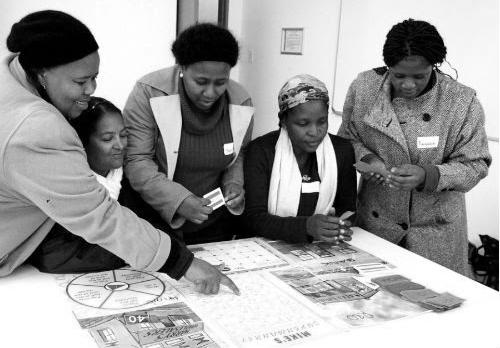
YOUTH JOB CREATION: A POLICY PRIMER FOR THE IMPLEMENTATION OF SUSTAINABLE DEVELOPMENT GOAL 8 Full Youth Employment by 2030 2nd Edition Draft 2nd Edition Policy Primer Draft (17-09-15).indd 1 9/17/2015 10:46:24 AM

Jeremy Lefroy MP
Chairman, Parliamentary Network for the World Bank Member, International Development Committee, UK Parliament
The Sustainable Development Goals are perhaps the most extraordinary achievement by the UN in my lifetime. So I am pleased to introduce this compendium of policy ideas and practical solutions for achieving one of the most important SDG targets: “Full and productive employment for youth by 2030.”
Intro
Its very hard: few in government or private industry, ever sit down to discuss ‘How can we create more jobs?’ Usually, in these times of austerity, it is the reverse: ‘How can we cut the payroll?’ So I welcome the new initiatives of the World Bank, the ILO and the IFC in the youth job creation field. I also congratulate our own Secretary of State, Justine Greening who recognizes that: “Peak youth could, with the right policies, equate to peak growth.”
We, in government, must work quickly to develop policy ideas for how to achieve this. I am delighted to be assisted in this effort by the young people of Peace Child International whose job creation programmes I have witnessed in Africa, and whose 2nd International Youth Job Creation Summit I am cohosting in Morocco. Their sense of urgency and clarity are what we need to drive solutions to this immense challenge.
Like Justine, I believe that the millions of young people coming on to the job market are not a threat but rather a tremendous opportunity for the good of all of us.
Let us all work together to realise that opportunity.

2nd Edition Policy Primer Draft (17-09-15).indd 2 9/17/2015 10:46:25 AM
This booklet has been prepared by Peace Child International for the Parliamentary Network on the World Bank and IMF to launch an ongoing research project to disseminate best practice in the field of youth job creation. The views expressed in this booklet are those of the authors and do not reflect official policies or opinions of either Peace Child International or the Parliamentary Network on the World Bank and IMF.

Contents Lead Author David Woollcombe Researcher Jessica Littlewood
Fred Fenwick,
Carlson,
Simonds Problems & Solutions Commitment Entrepreneurship Education Lack of Access to Capital Absence of Youth Leadership Failure to go to Scale The Digital Divide Lack of Prioritisation Unsustainable Jobs Conclusions Further Ideas Common Concerns 04 06 08 12 16 18 20 22 24 27 28 30 2nd Edition Policy Primer Draft (17-09-15).indd 3 9/17/2015 10:46:25 AM
Advisors:
Lily
Janne Geurts, Rosey
04 Headline Problem Headline Solutions
Unemployed Youth Youth with nothing to do; frustrated; unable to get married, start a family, have a life.
The World Bank tells us:
• 75m youth are registered unemployed;
• 600m youth will enter the job market in the next ten years with only 200m jobs awaiting them;
• 620m youth are currently not in employment, education or training (NEETs).
So – do the math! Our 1st Intl. Youth Job Creation Summit framed the Problem as this question:
“How are we going to create a billion jobs for youth in the next decade?”
Problems
Lack of entrepreneurship education
Lack of access to capital
Abscence of youth leadership
Faliure to go to scale
The digital divide
Lack of knowledge or prioritisation by donors or governments
Practical Polices that lead to Youth Job Creation. In this Policy Primer, we break down the Problems and Solutions
Solutions
Embed entrepreneurship education in the DNA of all national education provisions
Ease youth access to capital
Highlight and promote role models of youth leadership in youth job creation
Leave no young unemployed person behind
Universal internet access is a human right
Promote and prioritise SDG 8 targets to every youth, every parent and every government official
2nd Edition Policy Primer Draft (17-09-15).indd 4 9/17/2015 10:46:25 AM

Solutions
The three targets of Sustainable Development Goal 8 - full and productive youth employment by 2030, a global strategy for youth employment and a reduction in the the proportion of youth not in employment, education or training - establish the areas in which policy solutions are needed. At our Job Creation Summit, and in this Primer, we pinpoint practical solutions to the problems we identify and offer case studies of those solutions working in practice.
2nd Edition Policy Primer Draft (17-09-15).indd 5 9/17/2015 10:46:27 AM
Commitment
Sustainable Development Goal 8
With its headline target of eliminating poverty in all its forms everywhere by 2030, the UN’s Sustainable Development Goals represent perhaps the boldest commitment to which the UN member states have ever signed up to in their 70-year history. Re-stating many of the UN’s most famous commitments – to gender equality, education for all, health for all, to combat climate change, preserve bio-diversity, give access to justice etc. – the new goals give the world’s governments a lot of work to do –and the rest of us, many concrete targets to lobby for.
Achieving Goal 8 will construct the foundation on which the other goals can be achieved. Not only does it commit governments to achieve, “by 2030, full and productive employment and decent work for all” – its 11 other targets embrace all three pillars of sustainable development:
• Social: end child labour in all its forms by 2025; protect labour rights and promote safe and secure working environments of all workers;
• Environmental: improve global resource efficiency in
consumption and production and decouple economic growth from environmental degradation; promote sustainable tourism;
• Economic: achieve a 7% GDP growth rate in the leastdeveloped countries and higher levels of productivity through diversification, technological upgrading and innovation; promote policies that support job creation, entrepreneurship, creativity and access to financial services;
But these targets are not legallybinding: they are just a statement of intent – and it is very likely that many governments have no clue how to achieve them. That’s why we feel it important to keep updating this Policy Primer with practical examples with what we see working to solve the problems and overcome the obstacles to achieving them.
Goal 8 also commits UN Member Governments “by 2020, to develop and operationalize a Global Strategy for Youth Employment.” We hope that, as they develop that Strategy, they will draw on the examples in this Primer to help them meet that commitment.
06
2nd Edition Policy Primer Draft (17-09-15).indd 6 9/17/2015 10:46:27 AM

Indicators
Since the goals were roughly agreed in 2014, much work has gone to devise ‘Indicators’ – ways that governments, and all of us, can measure how far each goal has been achieved.
For Goal 8, these are admirably comprehensive: each Target has one or more ‘Suggested Indicator’ along with a ‘Suggested Source.’ (1) So for the Economic Growth Targets, the indicators vary from GDP per Capita growth (source: World Bank) to the number of bank branches and ATMs per 100,000 people (source: IMF) and the number of people with Bank A/cs or using mobile phone money services (source: World Bank Findex). For the Job Creation Targets, the indicators mostly draw on those currently assembled by the International Labour Organisation(ILO) – on average hourly earnings by occupation, sex, age & ability; unemployment rates
by sex and age; and Household surveys. Another key indicator is the % of micro-SMEs with a loan or line of credit (source: UNCDF). The Environmental Targets will be assessed on Resource Productivity (source: UNEP) and tax rates on energy use (source: OECD). Finally, the Human Rights Targets will be measured against data already gathered by the ILO – on the % of children engaged in child labour, the Number & frequency of fatal & nonfatal occupational injuries and the number of ILO Conventions ratified by each UN member state. All 17 Targets and 169 Goals have their own Suggested Indicators. Using them, and new ones that may be devised along the way, we shall all be able to keep track of how far, and how fast, each UN member state is achieving each of these bold targets – and the impact that those achievements are having on the lives of young people living there.
07 2nd Edition Policy Primer Draft (17-09-15).indd 7 9/17/2015 10:46:27 AM
Problem One


“The BTCA taught me about customer service. Now I have more customers than ever before.”
Lack of Entrepreneurship Education

Many donors have financed general education and training, and with good reason. In SubSaharan Africa, nearly half of students completing six years of primary education cannot read, write or add numbers.(2) 70% of teachers say they are happy with the curriculum they teach, but less than 50% of students
and employers agree.(3) Most of the time, subjects bear no relation to the world of work students will enter. With a more direct investment in developing entrepreneurial skills, students will see greater employability and professional success, especially as 83% of new jobs will be created in the enterprise sector.
08
Matee Freeman Paynesville, Liberia
2nd Edition Policy Primer Draft (17-09-15).indd 8 9/17/2015 10:46:27 AM

“We need to embed Entrepreneurship Training in the DNA of every nation’s education provision – from K through 12th Grade.”
Jeremy Lefroy International Youth Job Creation Summit 2013
Solution One
Providing Enterprise Education
Few countries include entrepreneurship education in their national, assessed curriculum. Some, like the UK, are conducting experiments like the Studio Schools initiative whilst the governments of Germany, Austria and Switzerland have kept youth unemployment low with nationwide apprenticeship schemes.
In the UN system, the ILO provides leadership with projects like Start & Improve Your Business Programme (SIYB) which reaches 4.5 million trainees through 17,000 trainers and 200 master trainers in 2,500 partner institutions.
Many youth empowerment and education organisations and advocates, including PCI, are working to persuade governments to incorporate entrepreneurship education into national curricula. There are many challenges ahead, but progress is gradually being made.
Year 10 Students taking part in a ‘Work the Change’ employability workshop
09
2nd Edition Policy Primer Draft (17-09-15).indd 9 9/17/2015 10:46:27 AM
Solutions in Practice

Youth Business International
The UK’s Prince Charles started his Prince’s Trust in 1976 to provide start-up loans for British youth living in the most disadvantaged parts of the country. Though it provides excellent business training, it is best known for pioneering the practice of volunteer mentorship - encouraging business leaders to mentor Youthled Business Start-ups (Y-LBS-Us) through to successful operation. They discovered that, with attentive mentorship, 60-70% of their startups are still in business and repaying their loans after 3 years. Without mentorship, that figure drops to below 20%. Now working in 40 countries and with over 350,000 Y-LBS-Us started, their research demonstrates that mentorship is more reliable as a loan guarantee than physical collateral.
Teach a Man to Fish
Together with its parent organisation, Fundacion Paraguaya, TFM developed the concept of the ‘Self-financing School’ – schools which run actual businesses, both to give students real-world work experience in running a business and to pay the teachers. Governments often struggle to meet school pay roll - and private school fees are often beyond the means of the most disadvantaged communities. The Self-financing School solves this problem - and gives its students exactly the kind of education they need to succeed in self-employment or micro-enterprise. Operating in Uganda, Rwanda, Tanzania, Guatamala and Paraguay, they have proved remarkably successful and are now moving into Asia.

10
2nd Edition Policy Primer Draft (17-09-15).indd 10 9/17/2015 10:46:27 AM
Solutions in Practice

Be The Change Academies
The BTCA idea was developed by young people who concluded that entrepreneurship is a vital skill for 21st century youth, many of whom will be forced into self-employment or enterprise creation in order to survive.
The BTCAs offer free
business plan creation training to any young person with the seed of a business idea. They learn about market research, budget, cash flow, product development and marketing to grow their ‘seed’ into a viable, fundable business plan.
500
PCI have funded over 200 businesses across Africa
5000
PCI has provided enterprise training for over 1500 women

11
Satta Momo Paynesville, Liberia
2nd Edition Policy Primer Draft (17-09-15).indd 11 9/17/2015 10:46:28 AM
Problem Two

Lack of Access to Capital
The young people we work with in West Africa confirm this: the doors of major Banks are firmly shut against them. Further, if they can get a loan from Micro Finance Institutions(MFIs), they are charged brutal interest rates of 5-15% a month - 60 to 180% a year! Where in the OECD countries, bank interest rates hover around 5% a year, this seems hugely unfair. It is all but impossible to start a business when you have to pay back your loan so quickly: farmers can pay back in months - IF the weather is good and they get their expected crops harvested, and the prices at the markets hold up. But even for farmers, the high interest rates, lack of flexibility and strong-
arm tactics of some MFIs, make it very, very difficult. Another problem is lack of collateral: many farmersand almost all young people in Africa - have no property against which to secure a loan. But non-collateralised loans are, again, almost impossible to find.
“Less than one quarter of one percent of loan portfolios of finance providers are directed to those under the age of 30.”
Pawan G Patil Chief Executive of the World Bank’s Global Partnership for Youth Investment
12
2nd Edition Policy Primer Draft (17-09-15).indd 12 9/17/2015 10:46:28 AM
Solution Two

Easing Youth Access to Capital
KIVA
The first and perhaps the most successful online crowd-source funding programme is Kiva. org. Started by Matt Flannery and Premal Shah in 2005, it has advanced over $610m in loans supplied by 1.2m lenders who benefit from a 98.79% repayment rate. It charges no interest on its loans, which are passed, electronically, through its 275 field partners, enabling them to fund more disadvantaged entrepreneurs with low interest loans.
Jatropha Youth Micro-Finance Bank
Jatropha is perhaps the world’s first youth-focused MFI. With its low-cost branch network on university campuses across Guinea and Mali, it has support from governments, UN Peace Funds and other UN Agencies to provide young people with inexpensive, non-collateralised loans. Jatropha also manages the Revolving Loan fund for the Guinea BTCA network.
SPARK
SPARK has funded 1,561 Small to Medium-sized Enterprises
(SME) start-ups – chiefly in postconflict fragile states. Together, these SMEs have created 5,939 jobs and achieved a 94% survival rate through careful training, low-interest loans and sensitive business incubation and mentorship of each start-up.
SPARK believes that agencies like theirs can learn more from its mistakes than its successes, so with support from the ABNAMRO bank, it runs a ‘Failure of the Year’ contest to encourage like-minded development agencies to own up to their errors so that all can learn from them.
Prince’s Youth Business International
YBI turns job seekers into job creators. All members of the YBI Network offer an integrated support package to under-served young entrepreneurs with a combination of training, access to capital, mentoring and other business development services. In 2013, YBI’s members helped 14,406 young people start their own business and gave entrepreneurship training to nearly 200,000 young people.
13
2nd Edition Policy Primer Draft (17-09-15).indd 13 9/17/2015 10:46:29 AM
Solutions in Practice
Musulyn Dassen
Musulyn began the Be The Change Academy programme selling fish but had to adapt her business plan because Ebola.
“I got a $200 USD loan right at the time of Ebola. When I made the first trip to buy the fish, the border was closed because of Ebola. Instead of returning with no goods, I decided to buy gari instead. The BTCA programme helped me to make the decision to change my business from fish to gari because I was taught that if you cannot easily get the goods you need, you have to think how you can change.”
 Musulyn Dassen Paynesville, Liberia
Musulyn Dassen Paynesville, Liberia
14
2nd Edition Policy Primer Draft (17-09-15).indd 14 9/17/2015 10:46:29 AM
Spark Stories
James Mulbah, Liberia Ahmed Mohanned Ahmed. Somalia Alice Jua, South Sudan

James’ Green Centre buys and sells recyclables. He was part of SPARK’s Business Plan Competition of 2012. He spoke at the international BiD Network Conference for Growing SMEs, where he had the opportunity to match his business with investors.
KIVA Stories
Tsetsegmaa, Mongolia

Tsetsegmaa used a Kiva loan to expand her dairy business, buying two more cows to supply milk and yoghurt for a school lunch contract.

Somaliland is a challenging terrain with a complicated bureaucracy. SPARK is now helping Ahmed through these initial setbacks by guiding him through necessary bureaucratic processes.

Alice manages a pig business. A SPARK loan helped her build a slaughterhouse, where Alice will increase her services by including the manufacture of soap.


When Jhuni’s husband passed away, she opened a tailoring shop to provide for her children. A Kiva loan enabled her to buy a second sewing machine and more fabric to expand her business.

Paul runs a mobile money transfer business. When the number of transactions jumped from 10 to 60 a day, he took out a Kiva loan to open up more mobile money outlets in his town.
Jhuni, India
15 2nd Edition Policy Primer Draft (17-09-15).indd 15 9/17/2015 10:46:29 AM
Paul, Zambia
Problem Three

Absence of Youth Leadership
Youth unemployment is not just an economic problem but a personal one as well. Despite working hard in school, many young people find themselves unqualified for the modern job market and unable to find work. After prolonged periods of unemployment, many young people become disenchanted and socially excluded. Moreover, those suffering from long-term unemployment are unlikely to earn as much as their peers later in life.
The Silatech Index, developed with Gallup to measure youth mindset and access to jobs and
capital, has declined across the MENA region since 2009. Youth today are less hopeful than ever about their chances of getting a job or the capital they need to start a small enterprise.
Mohammed Bouazizi of the Arab Spring and the Occupy Movement created national and international headlines about the plight of the unemployed youth. And though there are thousands of youth-led agencies and NGOs working on behalf of youth around the world, very few have a strong focus on or are able to provide strong leadership on the problem of youth unemployment.
16
2nd Edition Policy Primer Draft (17-09-15).indd 16 9/17/2015 10:46:29 AM
Solution Three

Examples of Youth Leadership
The third sector and social enterprises are creating more jobs in the UK than any other sector, and IT is creating millions of jobs. Youth leaders are preparing for the digital age, and the purpose of PCI’s Youth Job Creation Summits is to create a catalogue of such role models as they emerge.
Restless Development
Their mission is to ensure that young people are significant contributors to development processes. Integral to the UK’s DfID’s International Citizen Service programme, Restless focuses on livelihoods and employment creation as well as safe sexual and reproductive health and rights for youth.
Alianca, Brazil
Lina Maria Useche founded this entrepreneurial alliance in 2005 to
give young entrepreneurs access to information, networks and guidance. It has a partnership network with 40 NGOs, universities, government and private sector partners - Coca-Cola, IYF, Danone and Natura. Guidance from YBI helped take Alianca to scale and support 17,000 young entrepreneurs in 15 states. 85% of its entrepreneurs are women.
Million Jobs for Youth Campaign
Lottie Dexter (23) led a successful UK campaign to abolish the jobs tax on young people under the age of 21, enabling the creation of 1.5m jobs for young people.(4) She also campaigns to abandon wage subsidy schemes, like the UK’s Youth Contract. “Such schemes will not solve our deeprooted youth unemployment crisis. We urge the government to abandon this sinking ship.”
BTCAs
PCI’s BTCA idea was developed by a 24-year old and made a reality by a 22-year old.(5) All its trainings are delivered by youth volunteers – some local, some international.
DfID’s ICS Entrepreneur
The ICS Entrepreneur follows a similar model to the BTCAs, offering young British opportunities to volunteer abroad and impact local communities.(6)
17
2nd Edition Policy Primer Draft (17-09-15).indd 17 9/17/2015 10:46:29 AM
Problem Four
Failure to go to Scale
Youth Business International plans to support 100,000 new businesses a year by 2020 that will, in turn, provide employment opportunities to hundreds of thousands more young people. McKinsey’s Africa at Work study reports that “accelerated job creation could add 72m jobs in Africa by 2020 with 5% in hospitality, 7% in manufacturing and 6% in agriculture.” (7) The travel industry promises to create 70m new jobs by 2030.(8) The IT sector reports a need for 200,000 more engineers every year across Africa. These are all impressive figures, but as David Robalinho of the World Bank said, “the problem is in the millions: but our solutions are in the thousands.” Several World Bank studies have also pointed out that, with an aging population in many parts of the world, “a country has to grow rich before it grows old.” In other words, without a large, working youth population, no country can afford to pay the pension costs of an aging population.

18
2nd Edition Policy Primer Draft (17-09-15).indd 18 9/17/2015 10:46:29 AM
Solution Four


McKinsey’s Africa at Work(7) report states that “Africa will create 54 million new, stable wage-paying jobs over the next ten years - not enough to absorb the 122 million expected to enter Africa’s labour force in that time period. However, accelerated job creation could add as many as 72 million new wage-paying jobs over the next decade, raising the wage-earning share of the labor force to 36 percent.” There are other efforts to take job creation to scale, too.
The European Commission’s Youth Guarantee Scheme
This scheme promises a job or a place on a training course to every European Youth within four months
of leaving school/college. It has secured €7bn, but the ILO calculates that this is less than 5% of what is needed for full effectiveness.
The UK’s Start-up Loans Company & Apprenticeship Scheme
The UK has committed £151 million to support start up loans for at least 30,000 new businesses. To date, more than 20,000 loans totalling at least £100 million have been granted. This has helped to keep the UK youth unemployment rate down to 23%. Also, since the UK government started providing funding for apprenticeships, their number has doubled in four years to nearly 500,000.
19
2nd Edition Policy Primer Draft (17-09-15).indd 19 9/17/2015 10:46:29 AM
The Digital Divide
The current emphasis by many development theorists on new technology opportunities in Africa doesn’t help youth living in areas where it is hard to find an electric light source let alone a laptop. Though it is well-known
that millions of jobs have been created in the IT sector over the last two decades, a huge percentage of African and South Asian youth are cut off from the opportunities driven by new technology.
“Africa could benefit from the introduction of cleaner technology, including sustainable energy, which could propel the continent onto a carbon-friendly and green development path.”
Report of the Danish Africa Commission (2009)
20
2nd Edition Policy Primer Draft (17-09-15).indd 20 9/17/2015 10:46:30 AM
Problem Five
Solution Five

The key is to increase the number of opportunities for Young Africans to work as e-lancers and net-preneurs. Despite the fact that most Africans struggle to get access to electricity, several excellent programmes reach out to youth who find themselves on the wrong side of the digital divide.
Digital Jobs Africa
This Rockefeller Foundation programme aims to impact 1 million lives in six African countries (Egypt, Ghana, Kenya, Morocco, Nigeria and South Africa) by generating social and economic opportunities through catalysing sustainable Information Communication Technology employment opportunities and skills training for disadvantaged African youth. It is a $100m, six-year programme.
Internet.org
Internet.org provides affordable internet access to the two-thirds of the world. The collaborative effort by Facebook, technology leaders, non-profits and local communities offers an app that allows free access to websites on health, employment
and local information in developing nations. Internet.org has also established an innovation lab to help developers adapt apps to function in remote areas.
Computer Aid
Computer Aid facilitates IT education in developing countries in an effective, green way. With the help of local partners, the organisation provides IT training and donates thousands of refurbished computers to orphanages, hospitals and schools. In this way, Computer Aid provides the resources for people to share information and gain IT experiencean increasingly important advantage in a difficult job market. Computer Aid has already impacted more than 800,000 people across 32 countries.
21
2nd Edition Policy Primer Draft (17-09-15).indd 21 9/17/2015 10:46:30 AM
Problem Six

Lack of Prioritisation
In spite of the 2013 World Development Report on Jobs and tens of thousands of pilot projects and research initiatives, youth job creation is still not enough of a priority for governments or donor agencies. Funding a government or development agency investing in big business is arguably easier than managing training, mentorship, incubation and the repayment of micro-loans, but the lack of prioritisation is also grounded in poor metrics. The World Bank Inventory of Youth Employment Interventions found that less than 5% of programmes evaluated tested for cost-effectiveness. For
the Joven programmes, one of the World Bank’s biggest initiatives, the Inventory concluded that “there is not enough evidence to make an assessment.” Given the lack of data and absence of rigorous analysis, it is perhaps not surprising that most donor agencies do not have a youth policy, let alone a youth employment policy. Very few have any officers specialising in youth issues. SubSaharan Africa needs a million new jobs every month for the next ten years, so making the job creation target of SDG Goal 8 must become a top priority soon. And securing better data and more rigorous impact evaluations is the first step.
22
International Youth Job Creation Summit 2013
2nd Edition Policy Primer Draft (17-09-15).indd 22 9/17/2015 10:46:30 AM
Examples of Prioritisation
The World Bank is the world’s largest investor in the youth job creation field with $2.8 billion invested between 2001 and 2011. It has set up an umbrella trust fund for youth jobs and leads Solutions for Youth Employment, a coalition of job creation specialists. The IFC has its Let’s Work campaign and the ILO runs the excellent youth employment network and the Work For Youth campaign. These new initiatives stand ready to offer governments specialist advice on youth job creation when they ask for it.
The Government of Guinea’s Ministry for Youth Employment is worth replicating, too, to achieve Goal 8 at scale. Coming out of the Ebola Crisis, Guinea’s Minister is promoting business plan competitions, loan funding for Be the Change Academy graduates and a World Youth Congress to design a policy road map to full youth employment by 2030.
Some funders, like the Mastercard Foundation, and some NGOs, like IYF, SPARK, PCI, and YBI, focus exclusively on youth job creation. The Kauffman Foundation singlehandedly created Global Entrepreneurship Week. Most large NGOs, however, do not have youth job creation on their radar. We hope that SDG Goal 8 will put it there and funding a priority.



23
2nd Edition Policy Primer Draft (17-09-15).indd 23 9/17/2015 10:46:30 AM
Solution Six
Problem Unsustainable Jobs

The generational challenge for today’s youth is to build a green, sustainable economy to replace the current fossil fuel-based one - or, as SDG Goal 8 Target 8.4 puts it, “to decouple economic growth from environmental degradation and improve global resource efficiency progressively through 2030.” In the last century alone, the world increased its fossil fuel use by a factor of 12 and extracted 34 times more material resources from the earth. The World Business Council for Sustainable Development estimates that by 2050, we will need an four-
to ten-fold increase in resource efficiency to meet the needs of the current population. The green economy, defined by the UNEP as “low-carbon, resource-efficient and socially-inclusive”, will usher in this efficiency. The ILO identifies eight key sectors that will be energised by a green economy transition: agriculture, forestry, fishing, energy, manufacturing, recycling, building and transport. All of us must start examining our carbon footprint and maximise our resource efficiency to ensure that we contribute to the building of a green economy.
24
2nd Edition Policy Primer Draft (17-09-15).indd 24 9/17/2015 10:46:30 AM

6.8%
The solar industry job growth rate is 6.8%
This impressive statistic is in comparison to a decline of 2% for the fossil fuel industry.

3.1 million
The green industry in the U.S. now employs 3.1 million workers
Green jobs now outnumber jobs in the fossil fuel industry in the USA; in Germany, more people work in green jobs than in the German car industry.

30 million
Worldwide, the green energy sector is estimated to create 30 million jobs by 2030
Across the entire Green Economy sector, estimates vary from 100m to 500m jobs created by 2030
25
2nd Edition Policy Primer Draft (17-09-15).indd 25 9/17/2015 10:46:31 AM
Opportunity
Solutions in Practice




Citizen Energy, USA
Chris and his Citizen Energy team retro-fit buildings in the US to save energy. Buildings consume 74% of electricity generated and waste 30%. Big retro-fitters are really only interested in the big 20-storey buildings, so Citizen Energy targets smaller buildings, offering a comprehensive service conducting initial bench-mark surveys and implementing the energy-saving innovations that their surveys show to be necessary.
Litre of Light, Philippines
Illac Diaz’s eco-businesses has won countless awards. By taking an empty soda bottle, filling it with a liter of water and a drop of chlorine and drilling a hole in the roof of a dark hut and plugging it with the filled soda bottle, the lantern will fill the room with light all day. Putting an LED at the top of the bottle with a small battery and solar panel, and it will fill the room with light all night as well.
Eco-Fire, Vietnam
1 million Hanoi citizens use sulphrous coal for cooking, but eco-fire cuts toxic emissions in half with fuel products made from agricultural waste. They cost 20% less than coal and burn for 20% longer. The challenge is persuading die-hard coal-burners to change their habits, so Hong Thai and Le Hong Tam have engaged student eco-activists to help them promote sustainable life-styles, starting with changing the fuel they use.
Green Dalmatia, Croatia
Making olive oil across Europe leaves mountains of hard kernels which most olive mills burn off as waste. Marija Tresoglovic and her partner collect the kernels and make them into briquettes for use in domestic and industrial fuel applications. Interestingly, their biggest customers are the olive mills themselves, but home-owners are increasingly attracted to them as they burn with a lovely scent.
26
2nd Edition Policy Primer Draft (17-09-15).indd 26 9/17/2015 10:46:31 AM
Conclusions
The young people attending PCI’s 1st International Youth Job Creation Summit reached 4 main conclusions:
- “Educate youth in LDCs for productive self-employment – not for waged jobs that don’t exist!”
- “Establish metrics so youth can compare which programmes work best.”
- “Make it easier for youth to access low-cost, flexible loans to start small businesses, and give youth the training and mentorship that will enable them to make those businesses successful and repay those loans.”
- “Share freely what job creation initiatives work in other countries and create a Road Map of what youth, governments and schools – locally, nationally and globally – should do to achieve Full Youth Employment by 2030.”
Start with entrepreneurship education
In the IFC’s “what can I do to create jobs for my generation?” youth essay contest, five out of the eight winning essays focused on education. This suggests that young people feel schools could do more to help them build skills and provide the information they need to face the challenge of employment, selfemployment and enterprise creation.
Offer non-collateralised, mentored loans for youth-led business start-ups There are many ways that governments and agencies can provide loans. A revolving loan fund
could be put at the heart of every training programme, or the PCI’s unique Be the Change Academy could be attached to every secondary school to enable students to graduate with an operating business. Setting up YBI Business Trusts or Clubs, SPARK Business Incubators or Business Plan Competitions with loans as prizes are options as well.
Focus on the SMEs and household enterprises
It is quite limiting to teach youth only the skills and interview techniques they need to apply for the handful of jobs in the formal, waged sector; it is better to focus on the informal sector and teach them the skills they need to improve their productivity.
Focus on research and get the metrics right
It is not impossible to prepare indicators of a ‘cost per job’ and ‘cost per enterprise’ created – and, by working together in the World Bank’s new Global Coalition for Youth Employment, we can begin to develop common metrics like this to give senior economists the evidence they need to assess the comparative advantage of different NGO and youthled approaches to youth job creation. From such data, economists can calculate the macroeconomic impacts of our endeavors. Until we do that, our field will remain marginalised.
27
2nd Edition Policy Primer Draft (17-09-15).indd 27 9/17/2015 10:46:31 AM
Further Ideas
Given that 90% of new jobs are created in the Private Sector, the IFC’s “Lets Work” agenda.
INVESTMENT
Improve the investment climate to encourage the entry of private enterprise and create formal sector jobs
INFRASTRUCTURE
Improve infrastructure, availability and quality of services to help enterprises create more jobs
SKILLS-MATCHING
Encourage the private sector to work with education institutions to provide on-the-job training and ensure that training better meets private sector needs
NETWORKS
Help private sector strengthen supply chains and distribution networks to improve their productivity and promote opportunities for jobs
VULNERABLE GROUPS
Target the inclusion of marginalised groups, such as women and youth
FREE TRADE ZONES
Create Free Trade Zones to encourage trade and target job-creating trading opportunities
28
2nd Edition Policy Primer Draft (17-09-15).indd 28 9/17/2015 10:46:31 AM
Of the ideas proposed by the IFC’s Job Creation Essay Contest, the following are worth pursuing.
COMMMITMENTS
A UN Year of Entrepreneurship
EVENTS
Annual National Job Summits
ONLINE PLATFORMS
Improved access to online platforms that enable young people to secure e-lancing commissions
INNOVATIVE EDUCATION
More courage on the part of governments to introduce innovative school ideas like the UK Studio Schools and the Self-Financing Schools of Fundacion Paraguay/Teach a Man to Fish.
29
2nd Edition Policy Primer Draft (17-09-15).indd 29 9/17/2015 10:46:31 AM
Common Concerns
Just as SPARK challenges development NGOs to own up to their biggest failures, so funding agencies and governments should admit, and learn from, what is clearly not working in the youth job creation field.
Too many tailors, carpenters and hairdressers
Minimal skills in market research would save many young people a lot of time and effort from trying to break into saturated markets.
Mobility Incentives
Several agencies have tried to reverse rural to urban migration by luring young people back to their villages with free bus tickets or mobility incentives. All too often, youth sell their bus tickets and/or return immediately to the city.
Job Guarantees
While Job Guarantees can set a decent labor standard, they often fail to address the more structural causes of unemployment. Governments spend millions on them only to end up helping a fraction of those in need in the long-term.
Public Sector Infrastructure Projects
These often disappear when the project is finished. Properly managed, they can teach good work habits and marketable skills to young people. Badly managed, they provide poorly paid, temporary work to young people,
Wage Subsidies
These may work temporarily, but such jobs often end as soon as the subsidies are withdrawn and sometimes distort the market as employers are tempted to fire existing employees in order to hire subsidised ones.
Youth Centres
Much-beloved of ODA funders, these buildings are ubiquitous across developing country towns and villages. A World Bank study, led by Wendy Cunningham, found that most such centres were under-staffed, underfunded.
30
2nd Edition Policy Primer Draft (17-09-15).indd 30 9/17/2015 10:46:31 AM
Further Reading
“Youth Employment Inventory” - Gordon Betcherman, Susana Puerto: http://www. youthemployment-inventory.org/about/
“Development and the Next Generation” - World Development Report 2007
“ Moving Jobs to the Center Stage” - World Development Report 2013
“Youth Employment in Sub-Saharan Africa” (OECD 2014) by Deon Filmer & Louise Fox; Grimm, M. Paffhausen, A. L. 2013. “Interventions for employment creation in micro, small and medium-sized enterprises in low-and middle-income countries”
“Evidence on Youth Employment; - Susana Puerto et al; World Bank 2014; See: http://www. worldbank.org/content/dam/Worldbank/Event/social-protection/Jochen%20Kluve%20 Friederike%20Rother%20.pdf
“Systematic Review of Interventions to improve Labour Market Outcomes of Youth” - Jochen Kluve et al; See: http://www.campbellcollaboration.org/lib/project/306/
“Smart aid: Why it’s all about jobs” The Rt Hon Justine Greening MP, Secretary of State, DFID; Speech of 27 January 2014; See: https://www.gov.uk/government/speeches/smartaid-why-its-allabout-jobs
Tibbs, S. DFID; The jobs and poverty paradox. See: https://dfid.blog.gov.uk/2014/07/08/the-jobsand-poverty-paradox/.
Woollcombe, D, 2007. Youth-led Development, Empowering youth to make poverty history
Notes
1. World Bank Internal Evaluation Group – Report on Youth Employment 2012; ILO – Youth Employment Trends 2014;
2. Filmer & Fox “Youth Employment in Sub-Saharan Africa” 2014 + Numerous other reports, eg. UWEZO report: http://www.uwezo.net/uwezo-east-africa-2012-report-findings
3. Statistic quoted by at the Solutions4Work Conference
4. See Hansard record of speech by 1st Secretary to the Treasury, Danny Alexander, on March 11th 2014: http://www.publications.parliament.uk/pa/cm201314/cmhansrd/cm140311/ debtext/140311-0001.htm
5. Jagan Devaraj, Founder of Peace Child India and Alpha Bacar Barry, PCI’s Africa Desk Officer, 2006 to 2007;
6. See ICS 7 x Principles at: http://www.volunteerics.org/7-quality-principles 5 of them relate only to UK Youth
7. McKinsey Study on Africa at Work: www.mckinsey.com/insights/africa/africa_at_work
8. Commonly quoted statistic: eg. by Bill Reese, CEO of Intl. Youth Foundation at the Intl. Youth Job Creation Summit from a study co-sponsored by IYF & Starbucks, and by Adam Weissenberg, vice chairman, Deloitte LLP, at: http://www.deloitte.com/view/en_US/us/ Industries/travel-hospitality-leisure/38b4fa3b5791b310VgnVCM2000003356f70aRCRD. htm#VCpEQZhD7dk
9. World Bank Internal Evaluation Group – Report on Youth Employment 2012;
10. IFC Let’s Work Campaign see: www.letswork.org
31
2nd Edition Policy Primer Draft (17-09-15).indd 31 9/17/2015 10:46:31 AM
“Today’s youth generation is the largest in history. It’s said we’re reaching ‘peak youth.’ In Africa, half the population is under 18. So we face an absolutely fundamental jobs challenge - in particular, jobs for young people. 600 million people will enter the job market in the next 15 years where, as it stands, there is little waged work and little chance of escaping poverty. But the flip side is, if they have productive work, income levels could increase faster than at any other time in their history. So, peak youth needs to be able to equal peak growth.”
Justine Greening
Secretary
of State for International Development, UK
“Our Vision is for a world where all youth have access to work opportunities that empower them to escape poverty, thus boosting shared prosperity worldwide. Our Approach is to Link public, private and civil society sector solutions, to Learn by collecting and disseminating knowledge across the broad youth employment landscape, and Leverage its knowledge to scale promising youth employment practices.”
Solutions for Youth Employment(S4YE)
Strategic Plan 2015-2020 (World Bank & others)
“Only through decent employment opportunities can young people get the chance to work themselves out of poverty. Focussing on youth is a must for any country.”
Juan Somavia Former Director General, ILO
“Youth Unemployment is a disease like Malaria. We have reduced malaria deaths by 43% and we can do the same for Youth Unemployment with the right medicine - the right mix of macroeconomic policies for job-rich growth and practical, local, lo-cost solutions.”
Branka Minic FutureWork
peacechild.org
info@peacechild.org
2nd Edition Policy Primer Draft (17-09-15).indd 32 9/17/2015 10:46:32 AM

















 Musulyn Dassen Paynesville, Liberia
Musulyn Dassen Paynesville, Liberia























